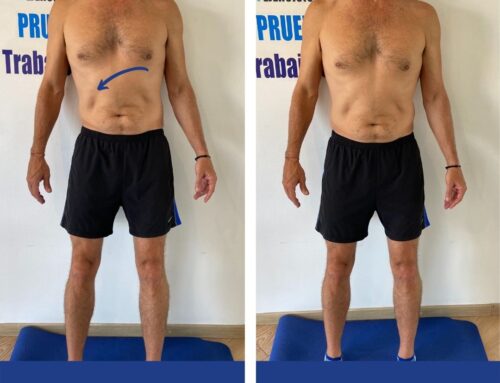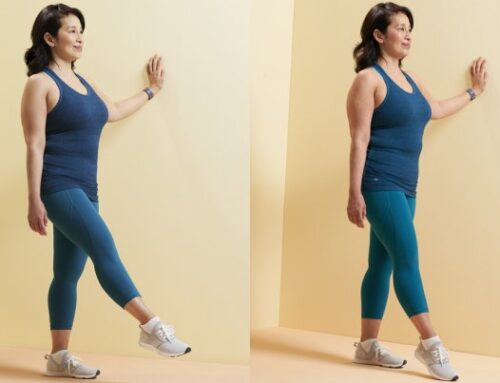NeuroFT has a platform of force to provide the best service
A platform of force is designed to measure the forces and moments applied to its upper surface when a subject stands on it. These platforms are constantly being used in clinical studies as a form of therapy to improve conditions related to loss of balance.
NeuroFT has this machine that contains millions of sensors that allow them to quantify the stability of the body.
This platform allows us to accurately measure balance, each individual's limits of stability, exact weight shocks and other accurate results. This allows us to individualize each treatment to maximize results.
Applications of force platforms
- Pathologies of the locomotor system and fractures:
To evaluate the pathology and the evolution of the patient. Also useful when prescribing orthotics and orthopedic footwear and perform a follow-up to see the effectiveness or the need to be modified, analysis of the evolution of fractures, etc. - Gait analysis after reconstructive surgery:
To evaluate the results of the surgery and the evolution of the patient. Mainly studies have been carried out in subjects with internal knee and hip prostheses. Of interest is the comparative study of the evaluation of pre-surgical and post-surgical gait, as well as the study of the patient's evolution after surgery. - Gait analysis in amputees:
The subject who has had one of the lower limbs amputated loses static support, the function of the articular complex as well as both proprioceptive and exteroceptive sensory information. As a result, they suffer postural and gait alterations. The studies of ambulation in these subjects are of great importance for the design of new prostheses and as a control of the adaptation of these subjects to the prostheses used and the evaluation of the gait reeducation process. - Gait analysis in neurological pathologies:
Neurological pathologies usually lead to motor alterations and in particular modifications of gait due to alterations in balance
gait due to alterations in balance, coordination, muscle tone, paralysis and paresis, and more.
Other applications:
- Sports Medicine:
In the field of sports what is most frequently studied are aspects such as energy expenditure, coordination of movements, evaluation of physical capacity during walking, jumping and running. These studies are intended to prevent sports injuries and to keep the athlete in the best physical shape. - Geriatrics:
There are more frequent pathologies in advanced ages that have an influence on the nervous system, locomotive apparatus, etc. which will cause different alterations of the physical condition of the patient. It is of interest to know the modifications that occur in the gait of the elderly and in their balance for the prevention of falls, so frequent in elderly people. - Technical aids:
Gait studies are important in subjects who are going to be prescribed technical aids for walking, to determine which is the most appropriate aid and which can offer the patient greater safety, according to the alterations they present. These studies are also useful to evaluate the efficacy of the prescribed aids. - Functional assessments:
Walking is an activity of daily living that is frequently studied in functional assessments, along with other activities such as going up and down stairs or maintaining balance in different positions and when making postural changes.
A platform of force is designed to measure the forces and moments applied to its upper surface when a subject stands on it. These platforms are constantly being used in clinical studies as a form of therapy to improve conditions related to loss of balance.
NeuroFT has this machine that contains millions of sensors that allow them to quantify the stability of the body.
This platform allows us to accurately measure balance, each individual's limits of stability, exact weight shocks and other accurate results. This allows us to individualize each treatment to maximize results.
Applications of force platforms
- Pathologies of the locomotor system and fractures:
To evaluate the pathology and the evolution of the patient. Also useful when prescribing orthotics and orthopedic footwear and perform a follow-up to see the effectiveness or the need to be modified, analysis of the evolution of fractures, etc. - Gait analysis after reconstructive surgery:
To evaluate the results of the surgery and the evolution of the patient. Mainly studies have been carried out in subjects with internal knee and hip prostheses. Of interest is the comparative study of the evaluation of pre-surgical and post-surgical gait, as well as the study of the patient's evolution after surgery. - Gait analysis in amputees:
The subject who has had one of the lower limbs amputated loses static support, the function of the articular complex as well as both proprioceptive and exteroceptive sensory information. As a result, they suffer postural and gait alterations. The studies of ambulation in these subjects are of great importance for the design of new prostheses and as a control of the adaptation of these subjects to the prostheses used and the evaluation of the gait reeducation process. - Gait analysis in neurological pathologies:
Neurological pathologies usually lead to motor alterations and in particular modifications of gait due to alterations in balance
gait due to alterations in balance, coordination, muscle tone, paralysis and paresis, and more.
Other applications:
- Sports Medicine:
In the field of sports what is most frequently studied are aspects such as energy expenditure, coordination of movements, evaluation of physical capacity during walking, jumping and running. These studies are intended to prevent sports injuries and to keep the athlete in the best physical shape. - Geriatrics:
There are more frequent pathologies in advanced ages that have an influence on the nervous system, locomotive apparatus, etc. which will cause different alterations of the physical condition of the patient. It is of interest to know the modifications that occur in the gait of the elderly and in their balance for the prevention of falls, so frequent in elderly people. - Technical aids:
Gait studies are important in subjects who are going to be prescribed technical aids for walking, to determine which is the most appropriate aid and which can offer the patient greater safety, according to the alterations they present. These studies are also useful to evaluate the efficacy of the prescribed aids. - Functional assessments:
Walking is an activity of daily living that is frequently studied in functional assessments, along with other activities such as going up and down stairs or maintaining balance in different positions and when making postural changes.




